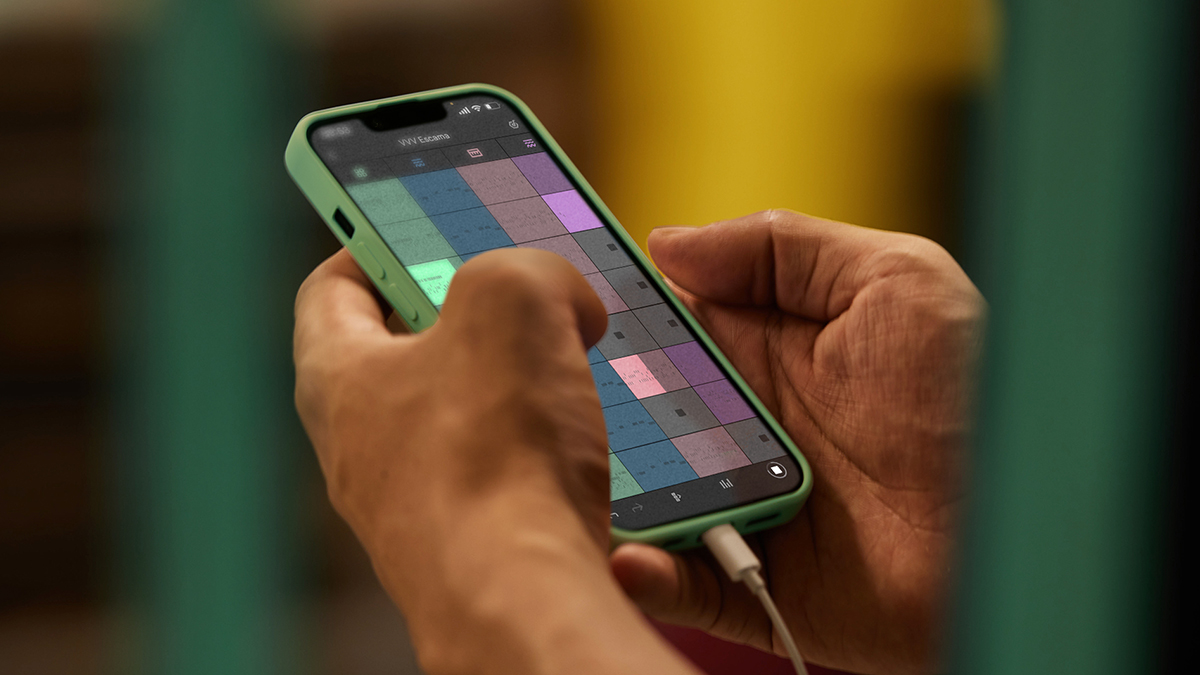"The 808 is still one of the sexiest drum machines ever built": Modeselektor on classic Roland gear, their new DJ-Kicks mix and why the iPhone has become their go-to instrument
Housed in a new studio, Berlin’s favourite sonic troublemakers crash the DJ-Kicks series with a shape-shifting techno-industrial mix. We sit down with Sebastian Szary to find out more
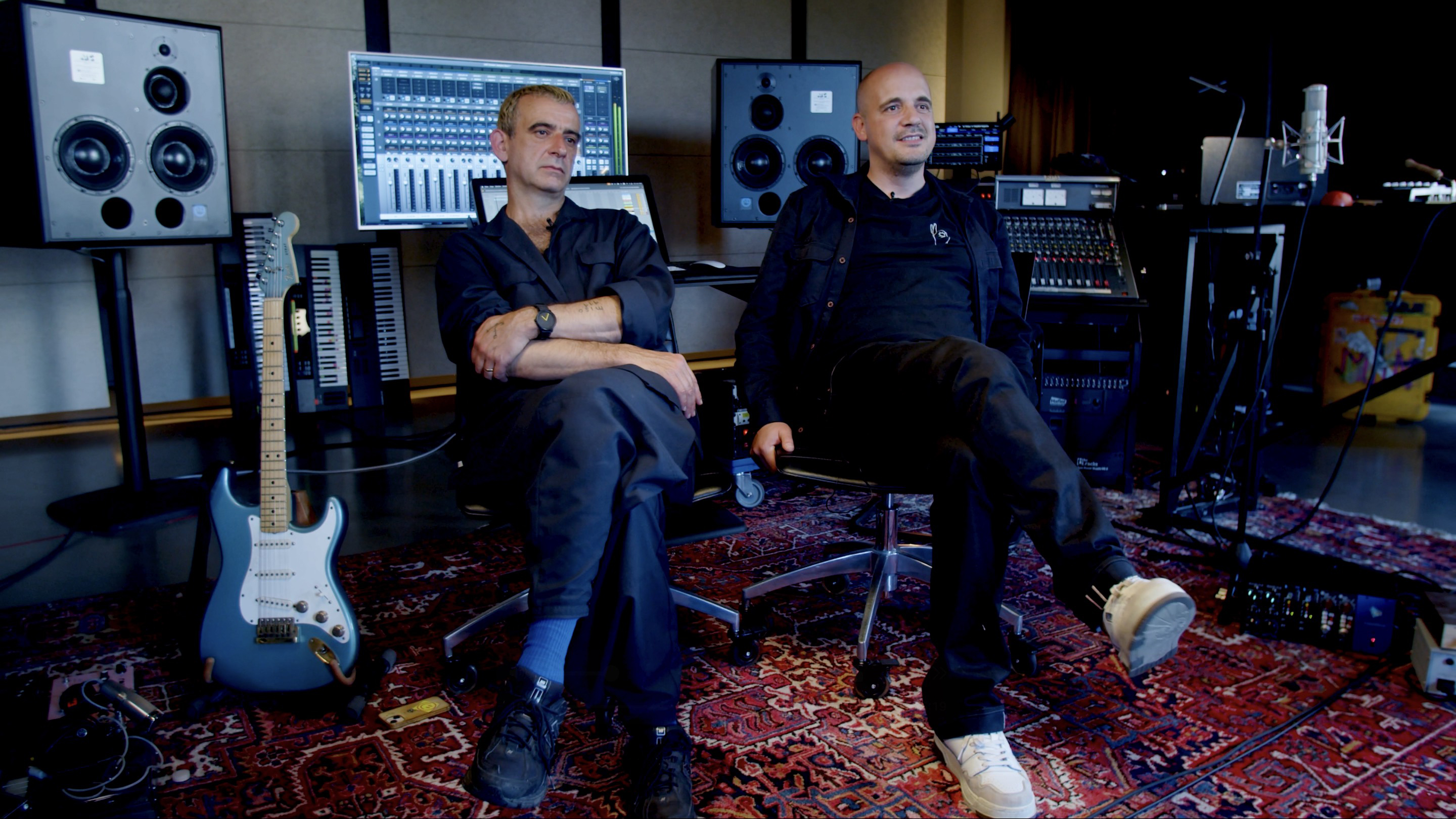
Since the release of their unorthodox debut album, Hello Mom! in 2005, few acts have embodied Berlin’s ever-shifting electronic music scene quite like Modeselektor.
From their early days in the anarchic post-Wall underground to founding their own label Monkeytown, the duo of Gernot Bronsert and Sebastian Szary has blended techno, hip-hop, IDM, bass, and everything in between.
Now, in 2025, they’ve completed another milestone: their long-awaited contribution to the legendary DJ-Kicks mix series. Recorded in a newly-built Berlin studio, the 22-track compilation features two unreleased cuts alongside genre-hopping selections from Kenyan sound artist Slikback, UK rapper Little Simz, Berlin heavyweights Ben Klock & Fadi Mohem, and longtime collaborator Siriusmo.
True to form, the mix evades predictable club tropes in favour of a narrative-driven journey designed for deeper listening. A celebration of Modeselektor’s past, present and future, and a snapshot of where electronic music might be heading next, we sit down with Szary to find out more about the mix and the duo’s new studio space.
Having been associated with !K7 for many years, why have you only recently decided to contribute to their DJ-Kicks mix series?
“With every Modeselektor release a selection of people, including DJ-Kicks, ask us why it’s taken so long, but we finally felt that the project was in the right timeline. Unfortunately, !K7 founder Horst Weidenmüller died at the beginning of the year, but we met him a few times in 2017 to talk about things, including DJ-Kicks, alongside a few other platforms famous for making DJ mix series, like Fabric.”
“The DJ-Kicks idea popped up again last year when we were working in the studio with Moderat, but that stopped and after contacting !K7 again in January we thought that would be the best time to take a chance and start recording sessions.”
Want all the hottest music and gear news, reviews, deals, features and more, direct to your inbox? Sign up here.
We were surprised to learn that you actually felt a bit nervous about putting the mix together?
“We had a look at the order of DJ mixes from the series, but if you dive too far into what other people have done you can limit yourself. The only thing we asked ourselves is what the perfect attention span is for people these days and what’s our vision?”
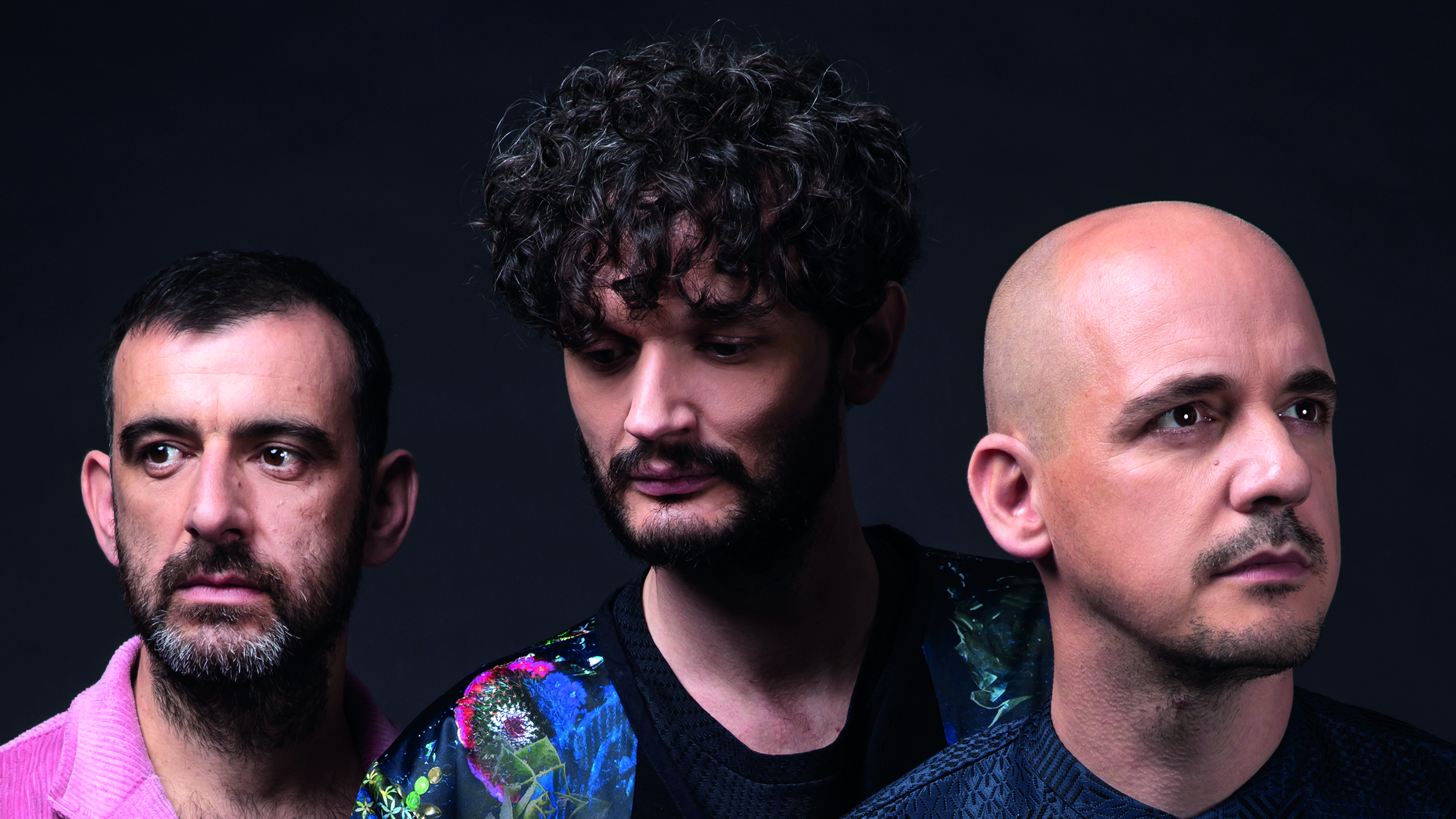
“We wanted to continue the series, but also create a fingerprint of memories that were free of dogma. Gernot and I have similar yet totally different tastes in music and wanted to bring them together as if we were creating a book or movie script. At the time of recording, it was -10°C outside, so I feel that the mix reflects the mood of winter in industrial Berlin.”
How did you collaborate with Gernot to gather track choices?
“Well Gernot is a DJ and music lover, and I’m also a DJ but I see music in a different way. It would have been boring for us to create a mix where everything starts at the same tempo, so we felt it should transition and try to create a story. We had a shared folder in the cloud and put all the ideas in, including interludes and weird music that’s not dancefloor-oriented but more like soundscapes or little skits, noises and field recordings.”
“I already have a huge archive of field recordings because I like to record everything and try to make something out of it. So we put everything in this Dropbox folder and created a structure or starting point in the DAW adding one track at a time. The worst part was licensing because when we sent !K7 all the track names that we wanted to use, we got a message back saying it’s impossible and you have to replace this track with another [laughs], so then we had to redesign the whole mix again.”
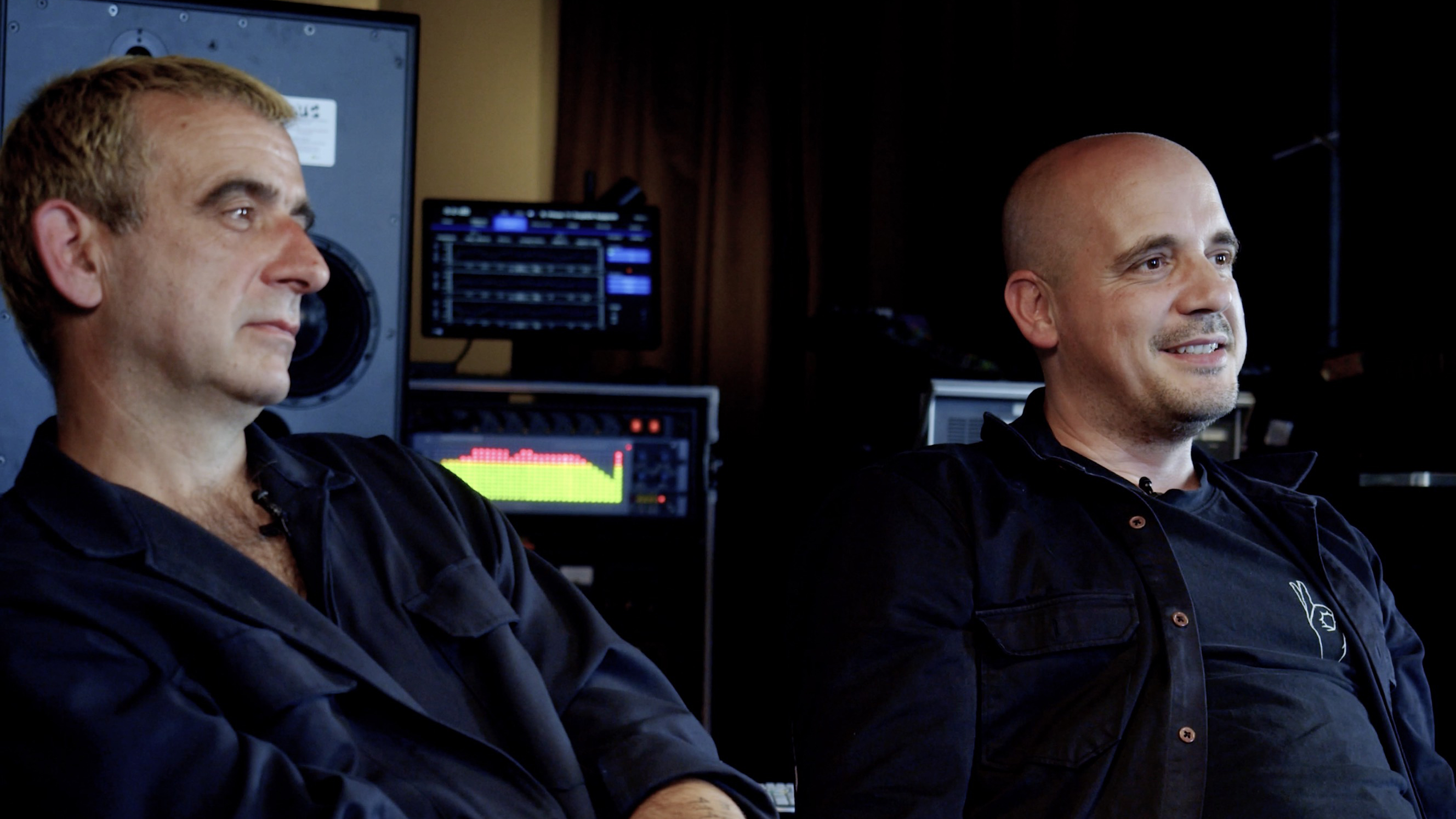
Talking of field recordings, the Eric Jabari track Stone Rinse has quite a lot of dialogue. What’s the story behind that one?
“It was just a question of creating one of those transition moments I spoke about. I would open the ‘script’ where you have all the folder tracks and start to think about the right moment to add something specific, but it's really hard to describe those decisions because they’re often based on feelings or intuition.”
“To come back to your question, the dialogue is a speech sample field recording from when Gernot went to Jamaica with another band and secretly recorded their conversation in the studio. A bit like taking a line from a book, field recordings can help take you from one chapter to another.”
You also contributed two exclusive Modeselektor tracks. Were they made specifically to fit into the mix?
“You're talking about the tracks MEGA, MEGA, MEGA and USA, USA, USA, right? The first one was a leftover from the recording session for the Moderat album More D4ta at the beginning of 2020. I think that album had 10 tracks, but when we opened the folder we found that we had another 25-30 sketches. That’s our process for making an album - we create lots of sketches and then skip back and forth, but MEGA was a track that Sascha [Apparat] had passed on, so we converted it to Modeselektor.”
At what point were the new tracks added?
“We actually decided to use the MEGA track quite early in the process. Again, it’s based on a feeling that this was the right time to take it out of the box and it was the same with USA, USA, USA, which was created in September 2021 after I went for a bike ride from my little village outside of Berlin into the city centre.”
If a track tells you everything in one minute, that’s fine, and if it takes eight minutes to drive you into another dimension, that’s also perfect
“I remember because the pandemic was fading out, it was really nice weather and everyone was outside. I came across a concrete yard, saw a party with lots of people and really fast music and took that as my inspiration to make a track. It was all done in one take, I made a few edits and then it went back into the folder until I found the right moment to discover it again.”
You’ve mentioned that the secret to enjoying a DJ mix is not to skip tracks. In a digital age, is that something you're always fighting against?
“Sometimes a mix is just one continuous file for digital platforms like Apple Music. They’re not designed so you can skip tracks, but the platforms are very good at displaying them all in a row. I think the younger generation has totally different listening behaviours, so these days albums have a different standing when it comes to consuming music.”
“I have two kids and so does Gernot, but I know that mine often listen to tracks for less than one minute. If a track tells you everything in one minute, that’s fine, and if it takes eight minutes to drive you into another dimension, that’s also perfect, but we can't change the behaviour of the next generation and it’s not my role to do that.”

You’ve recently moved to a new studio after spending 20 years based in Mitte. What drove that decision?
“One of the main reasons was due to the land lawyer doubling the rental price, but we also restructured our company. At the moment, we’re working with an assistant called Benita who is wonderful - she's kind of the boss, but it wasn’t necessary to have a big office space anymore and I think that’s a little bit outdated these days when you can work from anywhere or have meetings in a café.”
“Now we’re sharing a little office with another company so we don't need that much space. We just need to ask ourselves - what are we doing? We're here to make music, and it’s written in our DNA to continue.”
Was it a case of simply packing all your gear up and moving it to a new location, or did you have some big decisions to make in terms of what you wanted to keep?
“The new studio room has so much space, but we also have a storage room with lots of boxes of gear with notes on every one. It's like a museum – not full of really old stuff, but probably 20 years old. Right now, we have a basic setup with world-famous drum machines like the 808 and 909 and some of the Elektron stuff.”
“Then we have a really nice summing mixer, but we’re doing most of the work on the computer these days. We have some analogue synths, but also like to dive into the standard software libraries, so it's a combination of using that and positioning gear on a table around a central working space that we can use on-demand.”
Did you have to work on the studio acoustics to mirror your previous environment?
“We’re still really obsessed with EQing frequencies, and we’re turning 50 so while we still have good hearing it can be dangerous playing at all these festivals. Our eyes are still good [laughs], but listening is much more important. Before, this room was like a sports hall - a really big room with reverb because there was nothing in it and the walls were naked.”
“Thankfully, there’s an acoustic developer here who helped us to reduce the delay and reverb from 8 to 1.3 seconds. It's not deadly dry, but the room now has really good acoustics and looks nice. When we found this place, it was clear that we wanted to use it for both our Modeselektor and Moderat projects.”
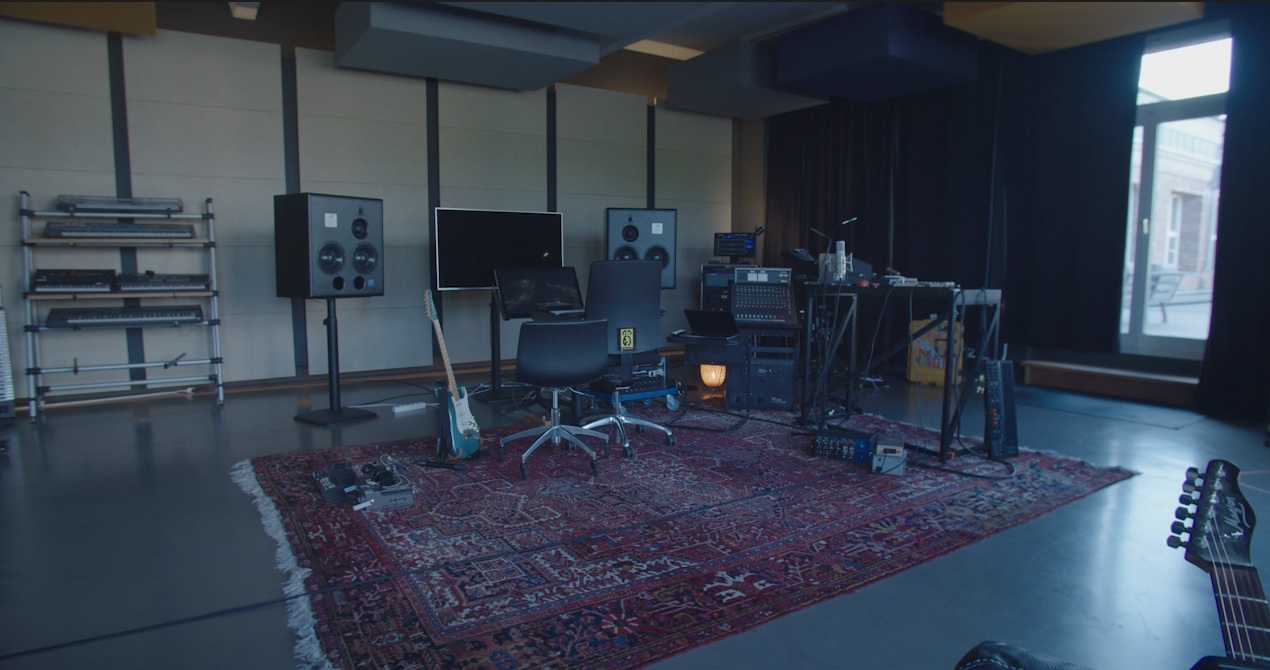
What instruments are key to your creative output these days?
“The answer might sound a little bit boring, but it's probably my iPhone. Ableton introduced an iOS app called Note that’s connected to your software and allows you to make on-the-fly sketches that you can upload to the cloud. For me, it’s the easiest way to write an idea, whether I need to do it on a plane, train or at home, but I also need my computer sample library. Over 40 years ago, sampling was a great innovation that allowed you to use a microphone so you could fully own your surroundings and process sound to create totally new waveform cycles.”
“I still think sampling is really interesting, but coming back to the drum machines - for us the 808 is still one of the sexiest they ever built and when it’s running it's a little bit unstable. There's no shuffle, but you can feel that it's pure analogue.“
“When I bought it back in 1993 it was my first piece of gear, but it still helps me creatively. Having said that, I also really like digital sound - and digital mistakes! When you compress, time stretch and shrink a file, it creates artefacts and when you pitch a sample down sounds suddenly appear that you never heard before. It's like you’re searching for the gaps in between.”
Talking of samplers, we noticed you have a Teenage Engineering K.O. II EP-133?
“We bought that due to FOMO and Teenage Engineering has some really nice ideas. When they came up with the OB-4 radio, we thought it was really great because it has a drone or ambient mode that is absolutely stunning. The drum machine you're talking about is like a mini-MPC and its new operating system gives you much more possibilities. I mean, it's a gadget – and we can ask whether it’s necessary to build things like this when there are so many similar types of gear, but we’re addicted… and it’s also inspiring.”
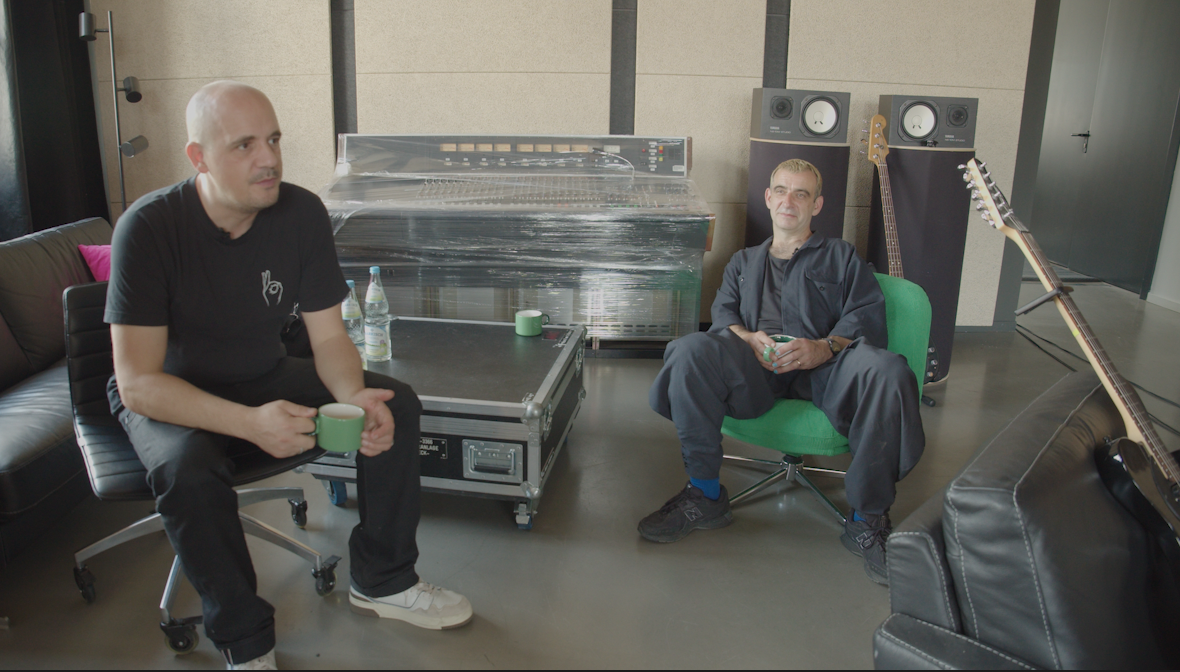
We also saw that you have an old Studer 961 console. Are you still mixing in analogue?
“We actually have two Studers - a small version with almost the same channel strip and a bigger one that we used to make some mixes for Modeselektor’s Extended in 2021. These days, it’s a decision that we take quite late into a session because all of the Studer’s components need to operate at a certain temperature.”
It’s funny when I explain to my daughter that I need to wait for a piece of equipment to warm up before I can use it
“The nice thing about working in the computer is that all the components work within five seconds and you can start immediately, but old mixing desks and some synths are not very stable and need time to warm up. It’s funny when I explain to my daughter that I need to wait for a piece of equipment to warm up before I can use it.”
Moving on to the PC - are there any new plugins that you find particularly inspiring?
“We used to download a lot of new plugins but in the end you don't know what to take. When you have Ableton and install all the packages – not including third-party objects, I think it's enough. Of course, it's necessary to have a really nice EQ or compressor, but if you have too much stuff and spend too much time looking for the right thing, it means you're not just losing time but you also risk losing the idea that you had ten seconds before.”
Apparently, you’re going to rerecord the first two Modeselektor records. Is that because you're dissatisfied with them sonically?
“When we listen to some of the old tracks we think, ‘oh God, the kick drum is not in tune’, because we were using a lot of shitty gear back in 2005. Today, you can make it sound a lot better and find new aspects - not for all the tracks, but mostly for the instrument effects to see if we can bring them up to standard. The aim is to rebuild them with new equipment, especially the UDO synthesiser, which looks a bit like a Roland Jupiter-6.”
Having analyzed those original recordings, what have you learned about the evolution of Modeselektor over the past 20 years?
“I would say the evolution of Modeselektor is that sometimes we follow the stream, but mostly we don’t give a shit. Of course, we still inspire each other and we’re still inspired by music that came out or is coming out, but there's no master plan.”
“I think it’s nice to sometimes take a step back before taking another step forward, which is what we’re doing with the Modeselektor reworks. We have made some really fresh new stuff that I can't talk about because it's still in the Dropbox folder, but we’re going to keep working and inspiring ourselves and each other.”
You must confirm your public display name before commenting
Please logout and then login again, you will then be prompted to enter your display name.
